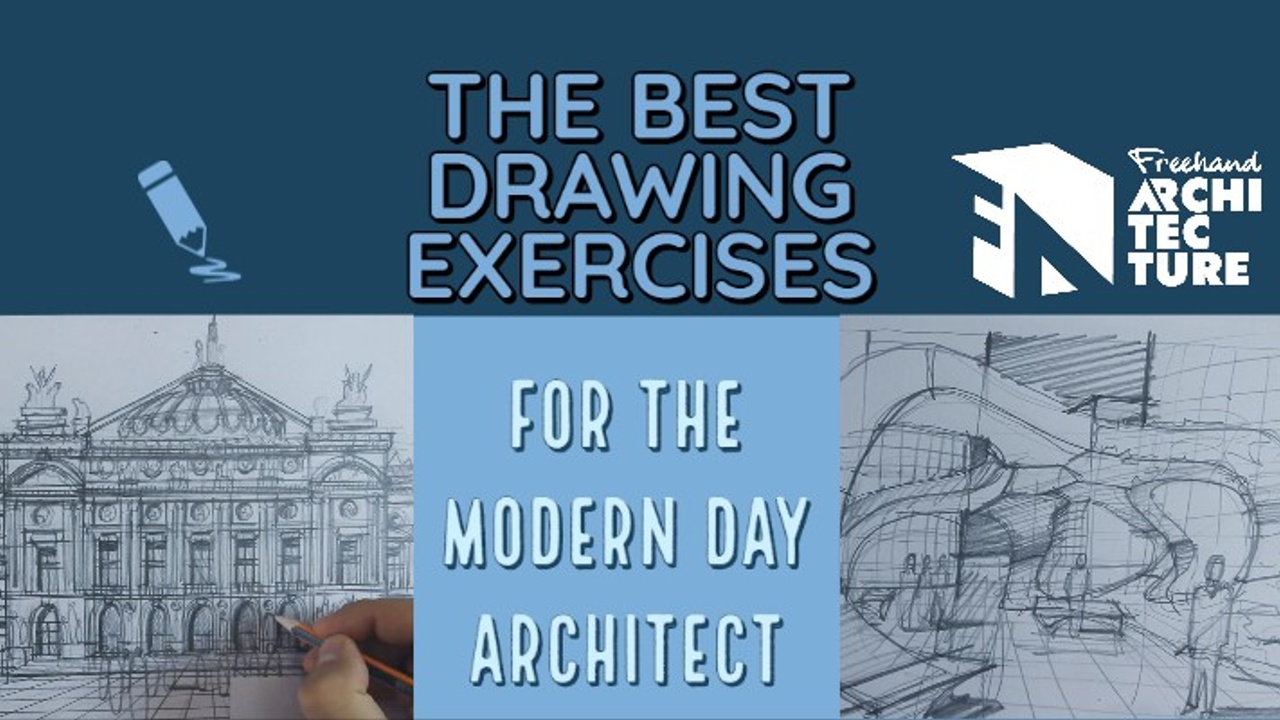How To Get A Successful Architectural Drawing
Sep 15, 2022
Getting a successful architectural drawing is what we all strive for as architects and designers…
But what you need to do in order to make any architectural drawing be successful (look good, have that quality to it) is a completely taboo subject which some people might find uncomfortable even to discuss…
Getting consistent results with drawing can be one of the mysteries of your design career (if you let it) or it can be one of the secret weapons in your drawing arsenal.
If we remember that famous quote ‘Consistency and constancy are the hardest to obtain in architecture” , well it holds true for drawing as well.
So what will get you a successful architectural drawing?
Is it a recipe?
Is it some sort of magic trick where you snap your fingers and your work just does itself?
Nope…
Getting a successful architectural drawing is all about following a couple of very specific steps, all in the right order… which I call the ‘Four-Step-Formula’
Step One – Spam Out A Line Drawing
At this stage you just start sketching an idea for your drawing.
You should just focus on getting it out there: drawing a large, detailed piece, doing your best to construct all the volumes (don’t even attempt to erase construction lines)
Don’t try to be too analytical of your work, just focus on filling the page with as much freehand sketched detailing as possible.
The only rule here is that you need to correctly construct your perspectives using vanishing points on the horizon line.
Multiple objects can have multiple perspective points, that is fine as well.

Step Two – Ruler Line Drawing
Now you need to whip out a ruler and start hardening all the construction lines… making them (you guessed it! ) contour lines.
I recommend you use a triangle and T square in order to get straight vertical lines (crooked verticals are bad bad news, so correct them if they ever pop up)
You can also harden some of the lines on your drawing – be it for the foreground objects or the vertical dominant, or for other important objects in your composition (let’s say you got a specific object or combination of elements which are unique to your drawing).
Step Three – Hatching
Here you need to go for full-on hatching, give your best so that you get a good drawing, hatching-wise.
You’re probably used of hearing this in all my posts:
- Use composed hatching (a mix between textured and smudged hatching)
- Go for contrasting areas (have dark areas close to light areas)
- Show spatial depth (exaggerate this if need be)
- Focus on the main objects in your composition (you don’t always have the time to finish a drawing, just draw the important volumes)
- You need to highlight object shadows and cast shadows (Hatch like your life depends on it! (at this stage of t he drawing it very well may!)

Extra Tip #1
You can star spamming construction lines – harden all the construction lines on your work. This will make your drawing look smarter, more architectural.
Extra Tip #2
You can use the ‘intentional mistake’ technique to make your drawing stand out even more. Keep in mind that this technique is RISKY, it might make your drawing look 200% better, or it could literally ruin it.





